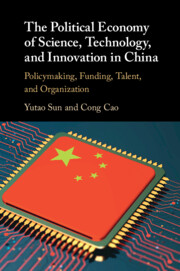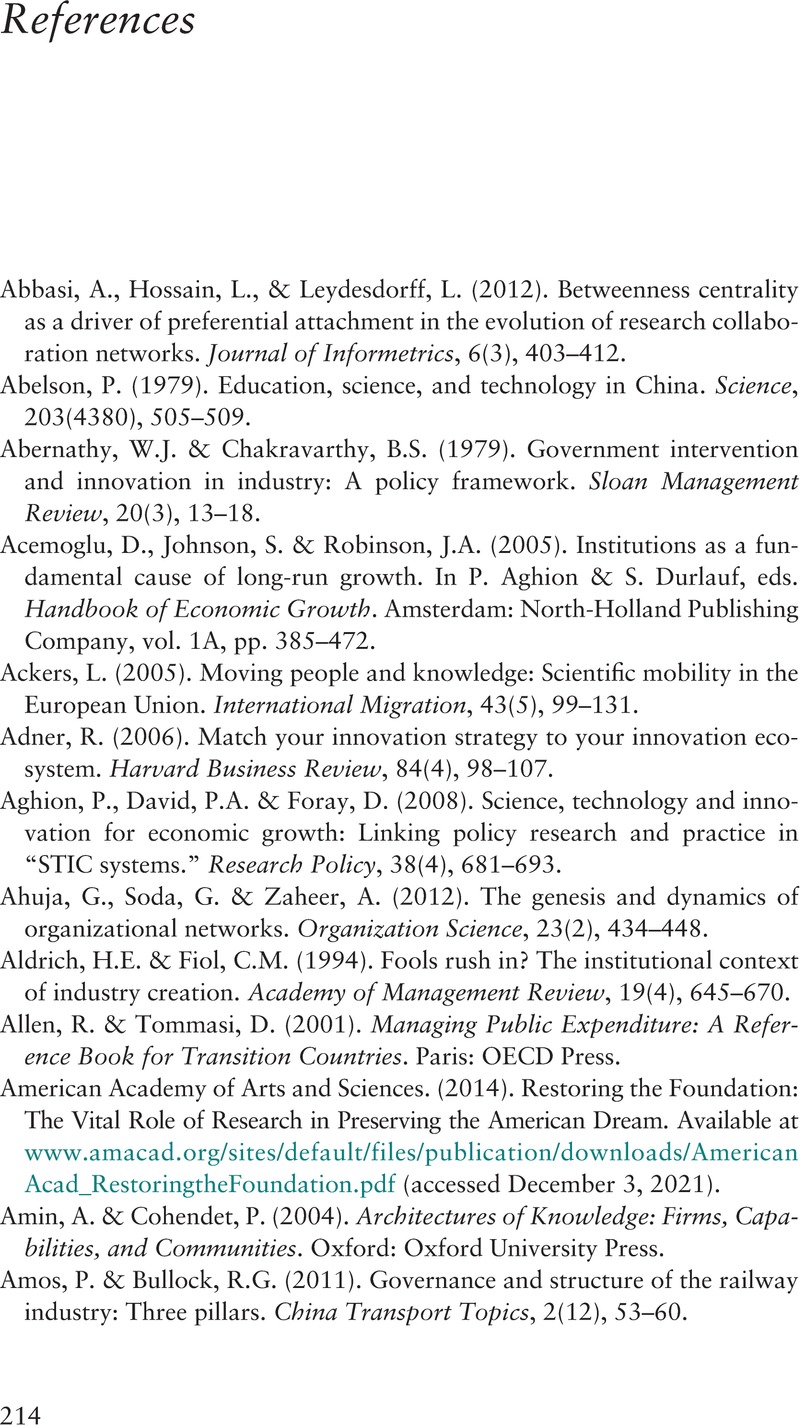 The Political Economy of Science, Technology, and Innovation in China
The Political Economy of Science, Technology, and Innovation in China Book contents
- The Political Economy of Science, Technology, and Innovation in China
- The Political Economy of Science, Technology, and Innovation in China
- Copyright page
- Dedication
- Contents
- Figures
- Tables
- Acknowledgments
- Abbreviations
- Introduction
- 1 Studying Science, Technology, and Innovation
- 2 Innovation Policies
- 3 Innovation Policies
- 4 Funding
- 5 Talent
- 6 Organization
- 7 Toward a Political Economy of Science, Technology, and Innovation in China
- References
- Index
- References
References
Published online by Cambridge University Press: 07 August 2023
- The Political Economy of Science, Technology, and Innovation in China
- The Political Economy of Science, Technology, and Innovation in China
- Copyright page
- Dedication
- Contents
- Figures
- Tables
- Acknowledgments
- Abbreviations
- Introduction
- 1 Studying Science, Technology, and Innovation
- 2 Innovation Policies
- 3 Innovation Policies
- 4 Funding
- 5 Talent
- 6 Organization
- 7 Toward a Political Economy of Science, Technology, and Innovation in China
- References
- Index
- References
Summary

- Type
- Chapter
- Information
- The Political Economy of Science, Technology, and Innovation in ChinaPolicymaking, Funding, Talent, and Organization, pp. 214 - 235Publisher: Cambridge University PressPrint publication year: 2023


